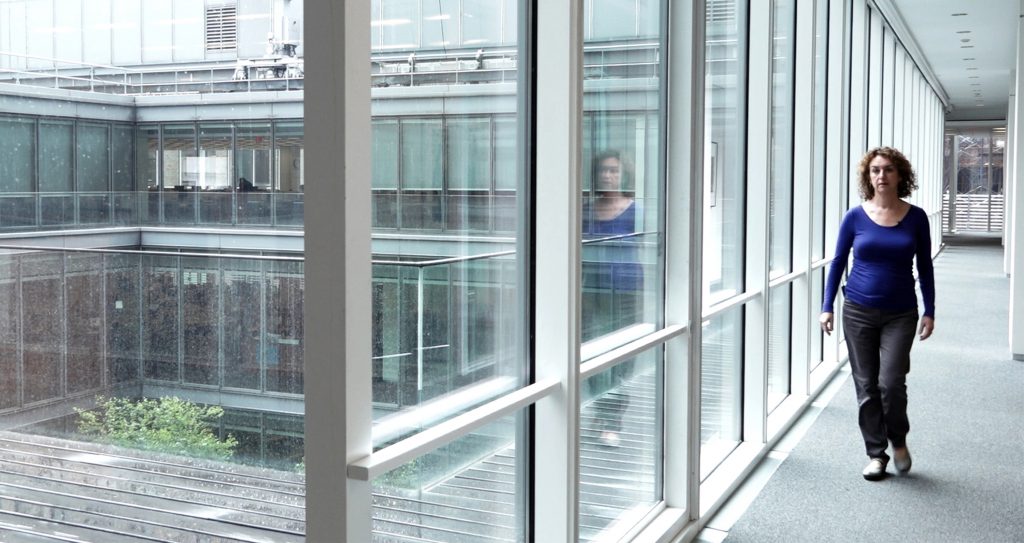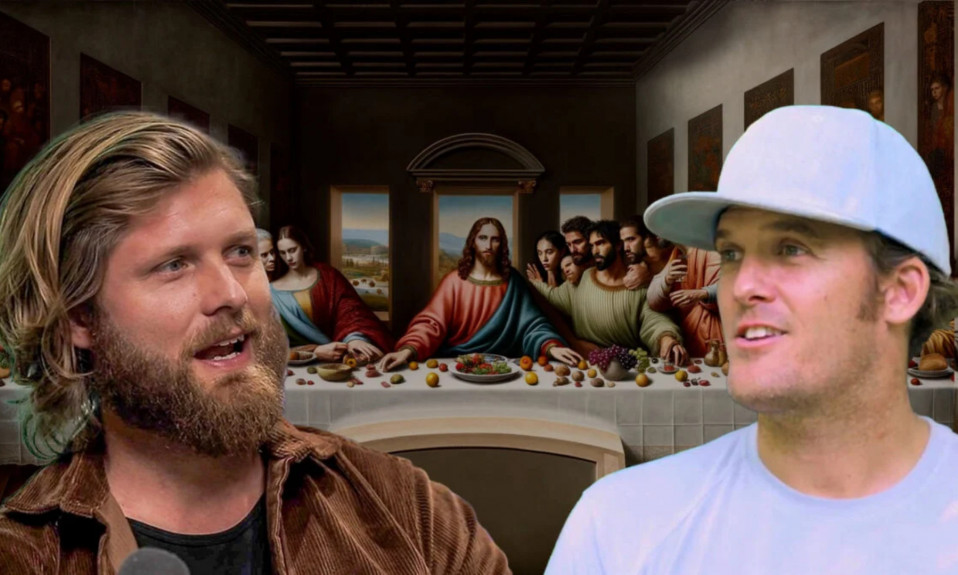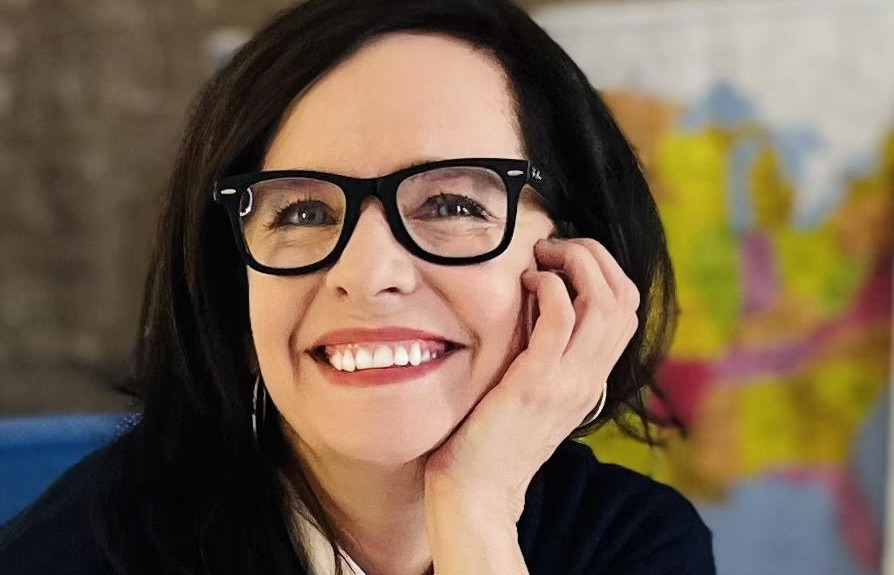Are you familiar with the Ann Freedman case, the $80 million forgery scandal that shook the art world? No? Well, then you should check out Driven to Abstraction the first chance you get. We sat down with director Daria Price and talked about this incredibly fascinating case, her new documentary, the art world and Price’s her love for the film industry.
Liselotte Vanophem: Hi Daria, welcome at the Raindance Film Festival. How do you feel about your film being screened here at the lovely festival?
Daria Price (Director): It’s very hard to know at festivals whether people will come to see it or not. I know a certain amount of people who are coming. I tried to get the word out to everyone. It’s very hard to do that when living in New York. I was trying to get the word out to art galleries and to places of which I thought they would be interested in seeing this film. I hope some strangers will come as well. One of the composers of the film just flew in from Padua and I have a few other friends coming as well. One of the participants in the film is going to be there as well.
LV: How did you become aware of the Ann Freedman case?
DP: Well, I’ve read an article in the New York Times from Patricia, who becomes one of the main characters in the film. I’ve always followed art forgery cases. I wrote a screenplay many years ago. One of the characters was a restoration expert and the two others were painters of which one of them was a bit of a forger. I had done an enormous amount of research because of that and it was like I already knew a whole lot about forgery. My eyes always fell on articles regarding art forgery and so I started to read multiple of those.
I always clipped articles. Something that my whole family does. I thought the story of Ann Freedman became a crazier and crazier story but it was a very difficult story to figure out how you would get into it. There’s always that “is she guilty or not guilty?” question. More than that, it was such an embarrassment for people in the art world, including completely innocent people. That’s what’s interesting about this case. Whether they were consciously tricked or whether it was just a sort of conspiracy. I became more and more interested in it and the story didn’t make a whole lot of sense in some ways. Then you find out that it wasn’t only Knoedler but also more of esteemed art galleries.
LV: As you said, some people didn’t want to participate in this film. Who was the first person you contacted that said yes to this?
DP: I’ve already been collecting for a couple of years articles about this case and then I started to do my own research so I could find out everything about it. Any filmmaker I knew said, “Do not make this film. It’s a great and fascinating story but you just can’t make it because everyone is going to run away if this would be true“. I went to speak with Patricia from the New York Times, who dug into the story and knew a lot about it, and when she agreed to participate that’s when I went “Ok, I should make this”. At least, it meant that I had a way in.
LV: In this film, we also see Ann Freedman’s attorney. How was he?
DP: It took a long time to get him. It wasn’t like he said not but he just wasn’t available. He’s a very busy and successful lawyer. When I interviewed with him, he became the spokesman of that side of the story. I think he did a very good job. Lawyers tell the story that they want the world to believe. Many things didn’t end up in the film. We could have easily made another film about how an attorney can spin a story. He did have an answer for everything.

LV: People told you “maybe you shouldn’t make this film“?…
DP: Well not because they think it wasn’t a good idea but they just thought that it was impossible to make. Raising money for a documentary and getting access to the right people is a very hard thing to do. I wasn’t going to get access to some people because they were under indictment. Ann Freedman was another story because she was under a lot of legal threats and she ultimately didn’t want to go on camera.
LV: Were there any moments you thought “Ok, maybe thee’s people are right. Maybe I can’t make this movie”?
DP: I think as a filmmaker you always have those moments. You’re going “what on earth am I doing?”. The work kept going on forever and I was going broke. I tend to finish things I started. It’s maybe insane. I think that there were people that were kind of glad that I was making this film. Those people weren’t guilty of anything but they’ve been to Ann while her (fake) painting was sitting there. It wasn’t their job to say “hey, is that a real one?”. That’s not what happens in an art gallery. You’re sitting in Knoedler and so you’re not questioning whether something is real or not. Some people like it that I was making this film but they couldn’t decide whether they wanted to participate. It wasn’t going to them any good. It wasn’t also that they were so heroic that they were going to do it for history. I think in the end I got interesting people to talk about interesting situations.
LV: Before making this documentary, you were already collecting articles about this case. While filming this documentary, what was the biggest surprise for you regarding the case? What was something you didn’t know beforehand?
DP: As I started to interview people who also knew other things, I was learning more and more about it. Why wasn’t it so unusual that these art experts would not raise a red flag. Some of them did so it would be wrong that say that they never did it. People don’t buy houses for 15 million dollars without having a lawyer coming around and checking it out. These collectors were buying paintings for millions of dollars. A painting that has no papers attached to them. Anonymity is what every buyer wants and then sadly they pay the price for it. They would have that people don’t know that they just bought a fake painting for a lot of money. What happens then is that no one’s talking about that topic.
I think the biggest surprise was this whole thing with Ramiro Gonzales. She wasn’t even someone I was trying to get because she was under a lot of indictment. She wasn’t going to go on camera. She was sort of the least ambiguous character because she had admitted guilt. Then it turned out that she has been beaten up by her boyfriend. Things like that do change your attitude towards her. At first, people were angry at her because they thought that she had ruined the art world but eventually she was just another woman abused by her husband.
LV: This documentary now premiered at Raindance. Are you going to take it to other film festivals after this one?
DP: Yes, it goes to the Haifa International Film Festival in Israel and then we’re taking it to upstate New York to the Film Columbia festival. In November, it will be screened at the Fort Lauderdale Int Film Festival.
LV: Do you have any paintings from famous artists yourself?
DP: No, but I do have a lot of friends who are painters. A lot of the paintings that are in the background of the interviews in this documentary were made by my friends. There’s a certain look that a lot of documentaries have now and it’s a very beautiful look and very sophisticated but sometimes I have the feeling that where the interviews are being taken place has nothing to do with the documentary they’re making.
I wanted to give the people the feeling that they were always in the world of art. Not necessary in the world of the masters in the art industry because those paintings might have been fakes anyway. I wanted to put authentic work painted by contemporary working artists as the background of those interviews. You will get the feeling that you’re always surrounded by paintings and art. For me, it was really about creating the environment.
LV: Do you already have other projects coming up?
DP: I have other ideas. Making this documentary and promoting it is so time-consuming. After spending a lot of time making a film, you’re becoming your sales-person. You’re doing the festivals and you’re trying to find a distributor. I have no time to start making another project.
(This interview was written as part of Big Picture Film Club’s coverage of the Raindance Film Festival 2019)
Also Read: Driven To Abstraction (Review)














